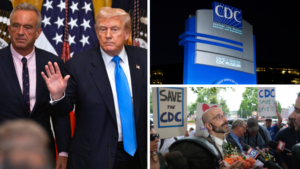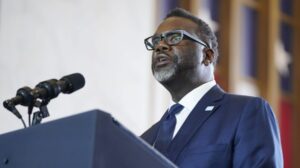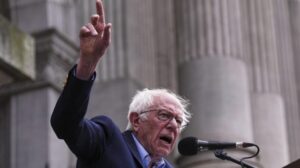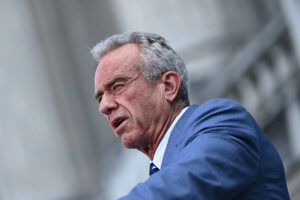The Dictatorship
The jobs numbers aren’t ‘rigged.’ Trump owns this economy.
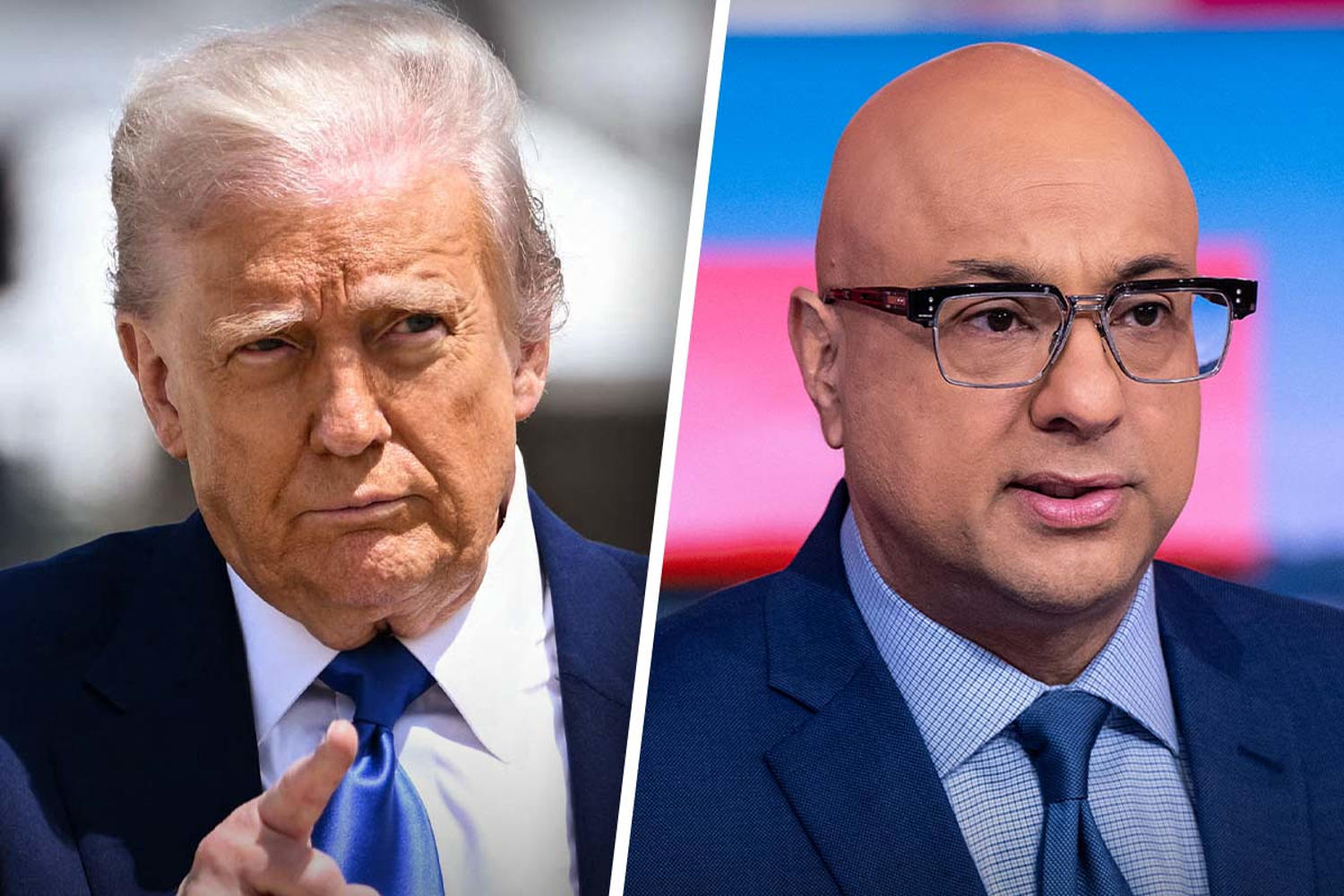

By Ali Velshi
This is an adapted excerpt from the Aug. 2 episode of “Velshi.”
On Friday, the Bureau of Labor Statistics released an alarming monthly employment reportexposing that the United States’ job market is much more fragile than many had expected. Only 73,000 net new jobs — that’s new jobs created, minus jobs lost — were added in July.
But worse were the revisions to the two previous job reports. May’s jobs report was revised from 144,000 jobs to only 19,000. June’s 147,000 jobs were mostly a mirage, too; it turns out only 14,000 jobs were added that month. That’s 258,000 fewer jobs than previously thought. The average for the last three months is 35,000, far fewer than the 150,000 or more needed for job growth to keep up with population growth in this country.
He has also accused Jerome Powell, chair of the Federal Reserve, of being a Biden appointee. But Trump is the one who elevated him to the position in 2017.
Now, revisions to government statistics are normal in subsequent months. It’s the nature of large numbers. They happen regularly, but they almost never show this dramatic a shift. It was a bad report, no doubt about it. It was particularly bad for a president who, in political terms, owns this job market and this economy, which has been roiled by the chaos of his tariffs and trade wars.
But instead of addressing the numbers and the challenge they present, Donald Trump said they were fake and fired the head of the department that collects them. The president baselessly claimed the jobs numbers were “rigged” and accused the fired commissioner of inflating numbers for the Biden administration and sabotaging them under his own administration.
Trump baselessly claimed that jobs reports were overstated during the previous presidency to prop up Joe Biden and are now being underestimated to hurt Trump. The president has zeroed in on the Bureau of Labor Statistics commissioner, labeling her a “Biden appointee” and ignoring the fact that she was confirmed in the Senate by a bipartisan vote of 86-8, with six senators not voting. Among the 86 yeas was now-Vice President JD Vance.
This is becoming a common refrain for Trump. He has also accused Jerome Powellchair of the Federal Reserve, of being a Biden appointee. But Trump is the one who elevated him to the position in 2017.
Friday also marked the president’s self-imposed, but often delayed, deadline for reaching trade deals with countries across the world. Back in April, Trump claimed he had already struck 200 dealsdespite the fact that there aren’t even 200 countries in the world. The number of deals before the Aug. 1 deadline was closer to eight, though you could arguably consider the European Union, which is a single trading bloc, as 27 countries.
Deals were struck with the European Union, Indonesia, Japan, Pakistan, the Philippines, South Korea, the United Kingdom and Vietnam, and talks are ongoing with Mexico and China. Nowhere close to 200. That was just a lie.
An executive order signed by Trump late Thursday outlined tariff rates for 69 countries, including several changes from the rates announced on “Liberation Day” in April. Smaller countries like Lesotho and Guyana were originally hit with massive tariffs, simply because they are poor countries that sell more to America than they buy and as a result have large trade deficits with America, but those rates have since been cut.
The day before, Trump also jacked up tariffs on Brazil to 50% for what he views as the political persecution of former Brazilian President Jair Bolsonarowho is on trial for attempting a coup in 2022. Trump has called that trial a “witch hunt.”
Back in April, Trump claimed he had already struck 200 deals, despite the fact that there aren’t even 200 countries in the world.
Forget a deal with one of the U.S.’ oldest and biggest trading partners, Canada. The White House is upping the ante on our neighbor to the north, announcing a 35% tariff on Canadian goodsup from 25%. That’s on goods not included in the U.S.-Mexico-Canada trade agreement.
Plus, on Wednesday, the Commerce Department said gross domestic product, or GDP, which is the largest measure of economic activity we have, increased at a 3% annual rate in the second quarter.
Some journalists jumped on that exciting top-line number, one that seems far more impressive than the first quarter’s GDP increase of just 0.5%.
But if some of those journalists had taken about 45 seconds to look under that shiny hood, they’d have found a far less impressive rebound than it initially seemed. Here’s why: That upward swing in GDP growth came from a massive and fully expected decline in imports, after a massive and fully expected increase in imports in the first quarter in anticipation of tariffs. Lots of money left our economy to bring goods in before the first tariff deadlines in April, so when imports sharply dropped, the smaller resulting trade deficit boosted the GDP growth figure.
But that’s not so much evidence of economic prosperity as it is the result of a math equation and how GDP is calculated.

Ali Velshi is the host of “Velshi,” which airs Saturdays and Sundays on BLN. He has been awarded the National Headliner Award for Business & Consumer Reporting for “How the Wheels Came Off,” a special on the near collapse of the American auto industry. His work on disabled workers and Chicago’s red-light camera scandal in 2016 earned him two News and Documentary Emmy Award nominations, adding to a nomination in 2010 for his terrorism coverage.
Armand Manoukian
and
Allison Detzel
contributed
.
The Dictatorship
Pay attention to the language Israel used to justify its attack on Nasser Hospital

This week, Israel struck Nasser Hospital in Gazaone of the largest and last functioning hospitals in the besieged Gaza Strip. The strikes killed 22 peopleincluding health care workers and five journalists (working for Reuters, the AP and Al Jazeera), and injured more than 50 others.
Early reports said the Israeli military hit the hospital twice in rapid succession in what’s known as a “double-tap,” a type of sadistic warfare tactic where one first strikes a target and then follows up with another strike to hit the people who rush to help rescue victims from the initial attack. NBC News later obtained video that showed Israel in fact struck the hospital in four successive strikes.
NBC News later obtained video that showed Israel in fact struck the hospital in four successive strikes.
Israel initially didn’t offer an explanation for why it carried out this strike. But in the face of global outrage, it called the attacks a mishap and attempted to justify them by saying it was targeting a “Hamas camera” — a ludicrous statement by any measure, but especially so given the ruthlessness of a quadruple strike.
These killings are not random tragedies of war. They are the predictable outcome of a worldview promoted by the Israeli government, peddled by American officials and propagated by American and Western media that systematically dehumanizes Palestinians.
That dehumanization is not subtle. In an interview with The New Yorker’s Isaac Chotiner, former U.S. Ambassador to Israel Jacob Lew rationalized the staggering number of child deaths in Gaza by suggesting that Israel views them as “the children of Hamas.” Think about that: a justification for stripping children of their innocence, reducing them to political extensions of militants, erasing their humanity simply because of who their father was. If every child can be seen as “Hamas,” then no child is truly innocent in the eyes of Israel. And as Lew and so many others have made clear, the Biden administration readily accepted that depraved rationale.
Under President Donald Trump, we’ve seen no deviation from that logic, from callously discussing the real estate value of Palestinian land to overseeing $12 billion in arms sales and expedited military assistance to Israel to carry on with its annihilation of the population, all while reducing Palestinians to Hamas members who aren’t interested in peace.
And that same logic was at play in the Nasser Hospital attack when Israel claimed it was targeting a Hamas camera at the facility. Not a commander. Not a weapons cache. Not a rocket factory. A camera.
When Al Jazeera journalist Anas al-Sharif was assassinated along with five other journalists while inside a media tent near a different hospital in a different deadly attack on Aug. 10, Israel claimed without any evidence that he was a Hamas rocket-launching commander. When Israel bombed schools, they were “Hamas” shelters. Mosques? “Hamas” weapons depots. Refugee camps? “Hamas” hideouts. And just this week, the killing of more journalists? Blamed on targeting a “Hamas” camera.
In this Israeli narrative, Palestinians are not people. They are not journalists. They are not doctors or teachers. They are not fathers, mothers or children. They are simply Hamas.
This is not new, nor should it be shocking. It is exactly what Israeli officials have been saying since they launched their genocidal war on Gaza following Hamas’ Oct. 7, 2023, attack in which 1,100 Israelis were killed and more than 250 hostages were taken, including soldiers and civilians, when President Isaac Herzog declared “there are no innocent civilians” in Gaza.
Equally insidious is the narrative that Israel claims when it faces global outrage. In April 2024, when Israel struck a World Central Kitchen aid convoy, killing seven humanitarian workers, the Israeli military called it a “grave mistake.” But it took no measures to mitigate such killings in the months and months that have followed.
These are not aberrations. They are patterns excused by the language of error while the system of impunity rolls on.
But these tactics only work in part because Western media, and specifically American media, so often takes these statements at face value. The Wall Street Journal published an op-ed titled “Who is a ‘journalist’ in Gaza?” that all but accused Palestinian reporters of being Hamas propagandists based on unsubstantiated and unverified claims.
These strategies — Israel labeling everything as a “Hamas” target or dismissing attacks that draw condemnation as “tragic mistakes” — gain strength largely because Western media echoes them.
Even more depraved was an article in Bari Weiss’ “The Free Press” that suggested that Palestinians suffering and dying from starvation in Gaza were suffering from “pre-existing medical conditions.” That distortion was so appealing to the Israeli government that Prime Minister Benjamin Netanyahu, an indicted war criminal, shared it on his official X account. Think about that: an indicted war criminal amplifying an American media outlet that trivialized starvation in Gaza due to the bad health of Palestinians.
Together, these strategies — Israel labeling everything as a “Hamas” target or dismissing attacks that draw condemnation as “tragic mistakes” — gain strength largely because Western media echoes them rather than challenges them.
Dehumanization drives the narrative. Mistakes go unpunished and the media launders them repeatedly.
History has taught us that atrocities are only made possible by campaigns of industrial dehumanization. For Palestinians, Israel has been leading that campaign for decades, and it has intensified it since Oct. 7.
To justify its genocide in Gaza, whether bombing a hospital or attacking journalists and aid workers, Israel does not need to provide any credible evidence. It simply needs the world, with the help of American media, to believe that Palestinian lives do not matter.
The world must reject this perverted logic. The deaths at Nasser Hospital should not just shock us. They lay bare how the language of dehumanization — “children of Hamas,” “pre-existing conditions,” “Hamas camera” — becomes a license to kill Palestinians. And they remind us that defending Palestinian dignity is not simply a political stance, it is a moral imperative.
Ayman Mohyeldin is an BLN anchor who has long reported on the Middle East and the Arab world. He is a host of “The Weekend: Primetime”which airs at 6 p.m. ET Saturdays and Sundays.
The Dictatorship
An easy way to counter Trump’s crime push is sitting in the Democrats’ back pocket

President Donald Trump’s recent focus on urban crime presents a classic dilemma for Democrats.
If they point out that his lurid portrait of a violent epidemic is inaccurate, they risk turning off voters who agree with him on an emotional level. But if they go along with it, they risk legitimizing his power grab.
Trump and his Republican allies clearly hope to ride this issue all the way into next year’s midterms, so Democrats need to come up with a counteroffensive soon.
Fortunately for them, there is a group of Democrats who know exactly how to run — and win — while talking about fighting crime effectively: big-city mayors.
Baltimore Mayor Brandon Scott told me that they are in a much better position than members of Congress or other national Democratic leaders to push back against Trump on crime.
“They should be lifting us up and allowing us to be the folks that are pushing the message, instead of trying to do the same thing that they always do,” he said. “They don’t know anything about reducing crime and violence. They don’t have to do it. They don’t have to deal with it.”
Democrats don’t just win mayoral races in the U.S. these days; they dominate them. Twenty-one of the 25 biggest cities in the U.S. are run by Democrats.
In each of those races, they face a similar set of local issues: taxes, schools and crime.
On the national level, voters tend to trust Republicans more to fight crimeyet Democrats regularly win mayoral races on the issue. That’s because they take the issue seriously.
When crime happens, mayors are the first responders of politics. After a mass shooting at a Minneapolis Catholic school earlier this week, Mayor Jacob Frey gave an emotional speech from the scene about the need for more than just thoughts and prayers.
Mayors also understand at a gut level something national Democrats often overlook, which is that emotional truth matters as much as the facts on the ground.
It’s a similar issue Democrats faced with the economy in 2024. The macroeconomics and the data sheets pointed to a resilient economy, but how people felt about the economy overpowered all of that.
You can’t win a race for mayor by pointing to a spreadsheet if voters are scared.
At the local level, the same is true for crime. You can’t win a race for mayor by pointing to a spreadsheet if voters are scared.
“Every good police executive also has to be concerned about the perception of crime. If the numbers are going down and people are not feeling safe, then you’re in the same place. You have a crime problem,” said former Rep. Val Demings, who previously served as a police chief.
Like most Democrats, Demings thinks Trump’s decision to send armed National Guard troops into D.C. and take over the local police department is a political stunt and a massive overreach.
But at the same time, she was clear the party has to embrace a smarter message on public safety, an issue that cuts across race, education and socioeconomic status.
When Republicans propose throwing more police at the problem, Democrats can be the party that focuses on initiatives that have been tested and shown to reduce the “social ills that caused decay in the first place,” such as high unemployment, substandard education and poor housing and living conditions, she said.
Other Democratic strategists said that the party will also need to talk directly to the people hurt by crime, making sure they feel heard and having nuanced conversations that don’t just resort to talking points.
Polls show that Democrats face a crime problem. A recent AP-NORC survey found that two-thirds of U.S. adults think crime is a major problem in the country overall, and 81% think it’s a major concern in cities.
Only 24% of voters thought crime was a major problem in their own community.
At the same time, only 24% of voters thought crime was a major problem in their own community.
Trump could easily overplay his hand, too. While the majority of respondents supported the idea of having the U.S. military and National Guard assist local police, most opposed the idea of the federal government taking control of a police department, as Trump did in D.C.
It was also easier for Trump to send the National Guard into D.C., which is not a state. If he follows through on his threat to send it into cities such as Baltimore, Chicago and New York over the objection of state and local officials, the mood might shift.
The mayors of those cities could play a big role in that.
Baltimore’s Scott, who is in constant touch with other Democratic mayors of big cities, says they are frustrated that the national party isn’t making more use of them.
Imagine if the Democratic National Committee held weekly events with mayors across the country on what they are doing to reduce crime. Or if the DNC or any of the other organizations tasked with winning elections were cutting and funding ads that could uplift the work of these mayors across the country.
Is it a silver bullet? No. But just spewing facts at people isn’t going to solve the perception issue.
“There is no way to have a winning message or strategy around gun violence, the drop in crime and all of that, and not include local mayors. Because at the end of the day, when it goes bad, they too are calling the mayor. ‘What are you and the police doing? What is this community violence intervention group doing?’ So now, let us lead. And you can lead from behind,” he said.
For more thought-provoking insights from Eugene Daniels, watch “The Weekend” every Saturday and Sunday from 7 to 10 a.m. ET on BLN.
Eugene Daniels
Eugene Daniels is an BLN senior Washington correspondent and co-host of “The Weekend,” which airs on Saturdays and Sundays from 7 to 10 a.m. ET on BLN.
The Dictatorship
Trump administration threatens states with odd demands for sex ed censorship
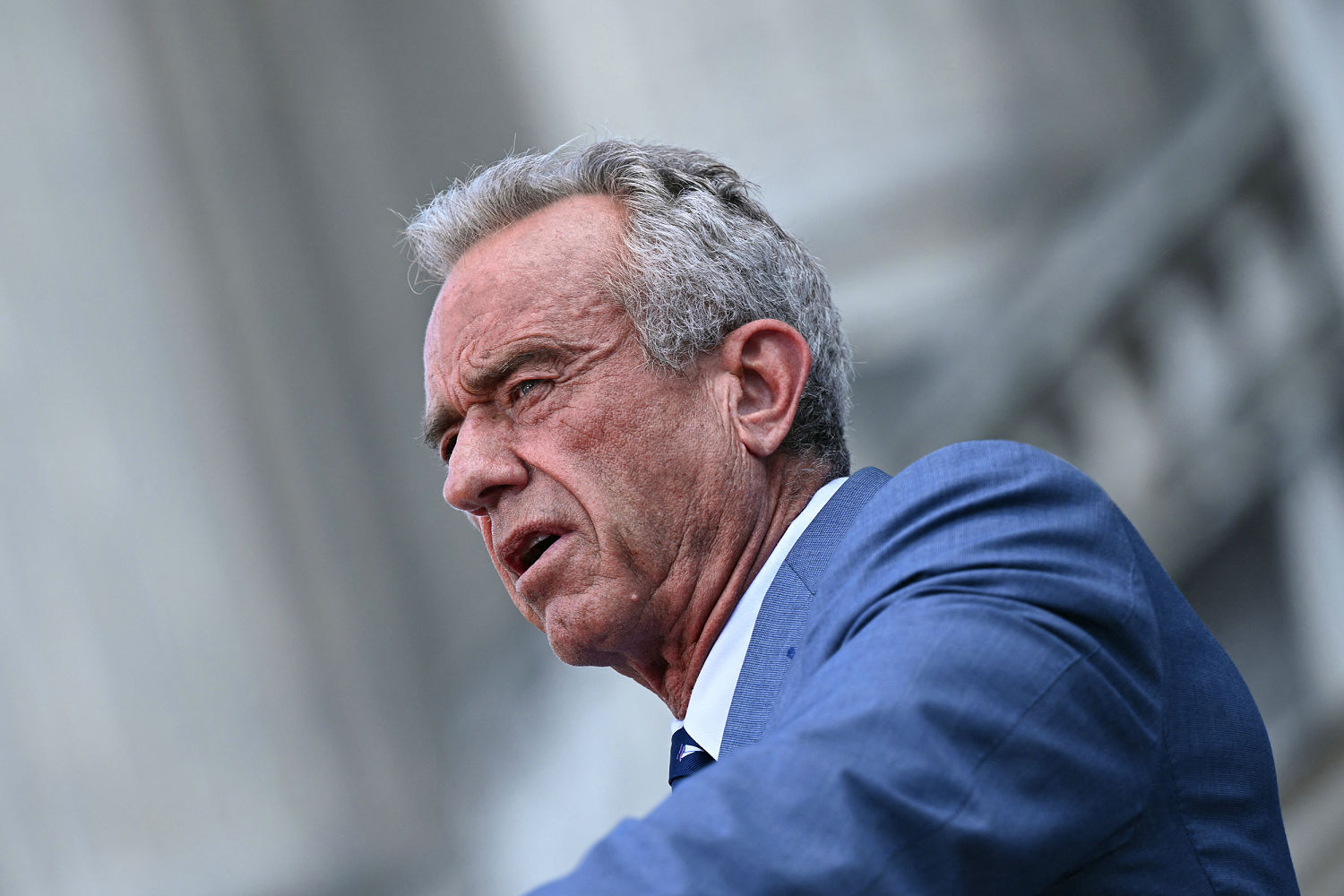
The Trump administration, which includes people both accused of and adjudicated for sex crimes and also people with ties to Jeffrey Epsteinis seeking more control over how American children are taught about sex.
An authoritarian edict out of the Department of Health and Human Services threatened to withhold millions of dollars in federal funding from nearly every U.S. state and territory unless they censor their federally backed sexual education programs by scrubbing references to “gender ideology” within 60 days.
This relates to a story I wrote about in June, when HHS threatened to rescind millions of dollars that had been authorized for California’s Personal Responsibility Education Program, which supports initiatives meant to prevent teen pregnancy and the spread of sexually transmitted diseases. The federal government demanded that the California program remove “all gender ideology references” — including, but not limited to, all references to transgender people. Last week, HHS announced that it had pulled California’s funding.
And now HHS has threatened similar funding in 40 states and six territories, along with Washington, D.C., if they don’t censor their own programs.
As I wrote in June, this is all part of a deeply anti-scientific crusade to deny the existence of trans people, in defiance of the numerous reputable medical associations whose experts say otherwise. And in this case, HHS is basically telling states it will inhibit their ability to combat the scourges of teen pregnancy and sexually transmitted diseases unless these states adopt the administration’s warped and demonstrably wrong views on gender.
-
Uncategorized10 months ago
Bob Good to step down as Freedom Caucus chair this week
-

 The Josh Fourrier Show10 months ago
The Josh Fourrier Show10 months agoDOOMSDAY: Trump won, now what?
-
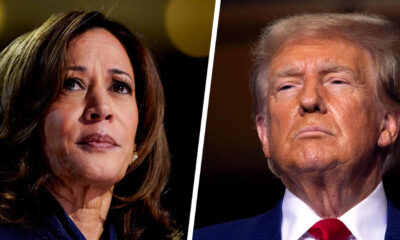
 Politics10 months ago
Politics10 months agoWhat 7 political experts will be watching at Tuesday’s debate
-
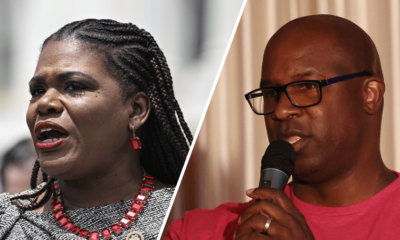
 Politics6 months ago
Politics6 months agoFormer ‘Squad’ members launching ‘Bowman and Bush’ YouTube show
-
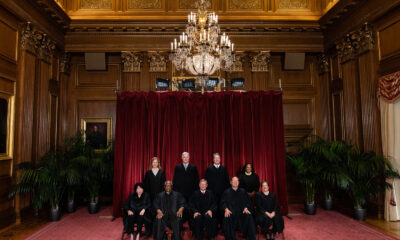
 Politics10 months ago
Politics10 months agoHow Republicans could foil Harris’ Supreme Court plans if she’s elected
-

 The Dictatorship6 months ago
The Dictatorship6 months agoPete Hegseth’s tenure at the Pentagon goes from bad to worse
-
Economy10 months ago
Fed moves to protect weakening job market with bold rate cut
-
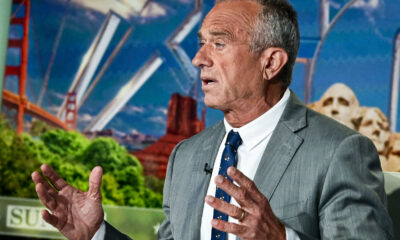
 Politics10 months ago
Politics10 months agoRFK Jr.’s bid to take himself off swing state ballots may scramble mail-in voting




